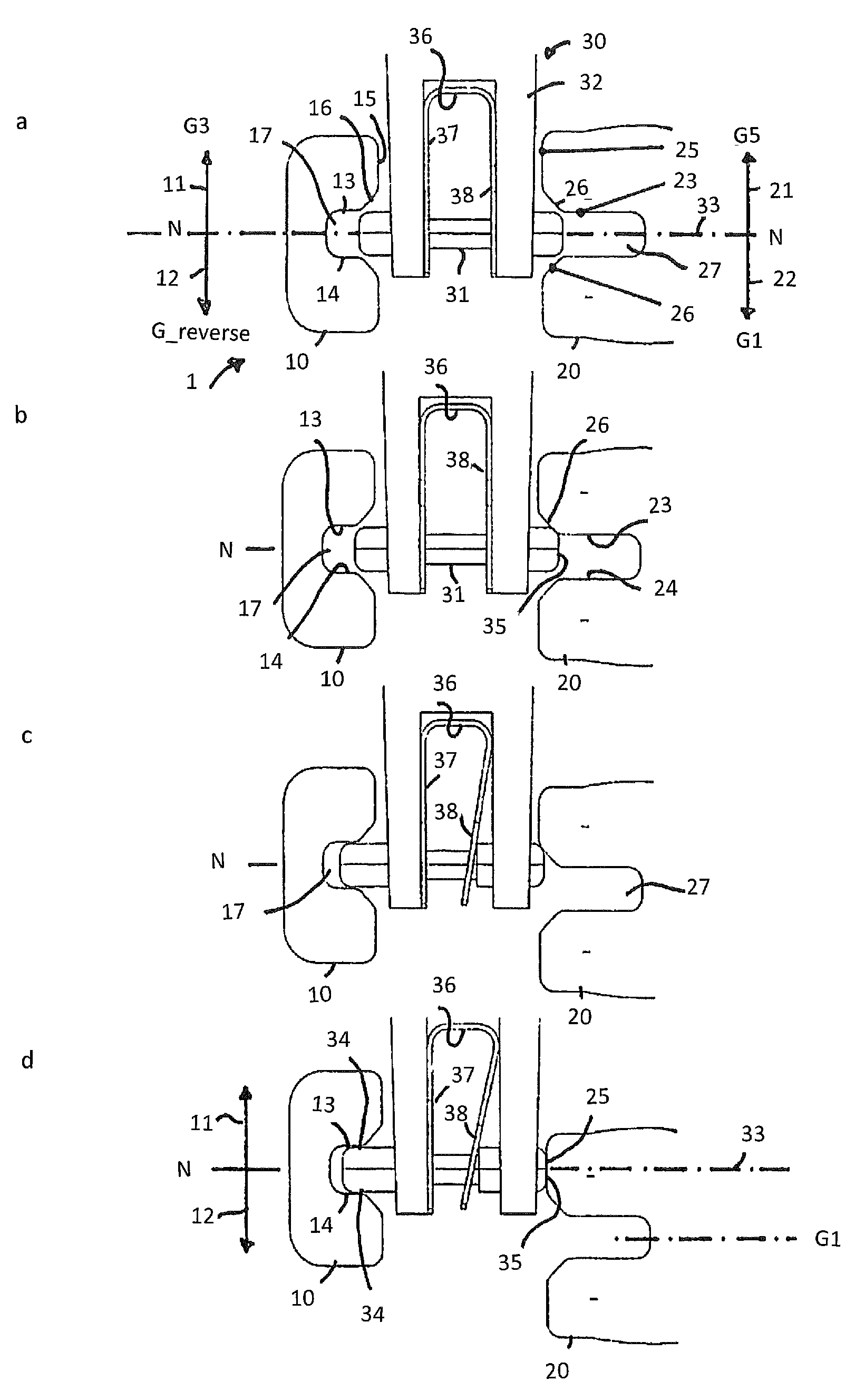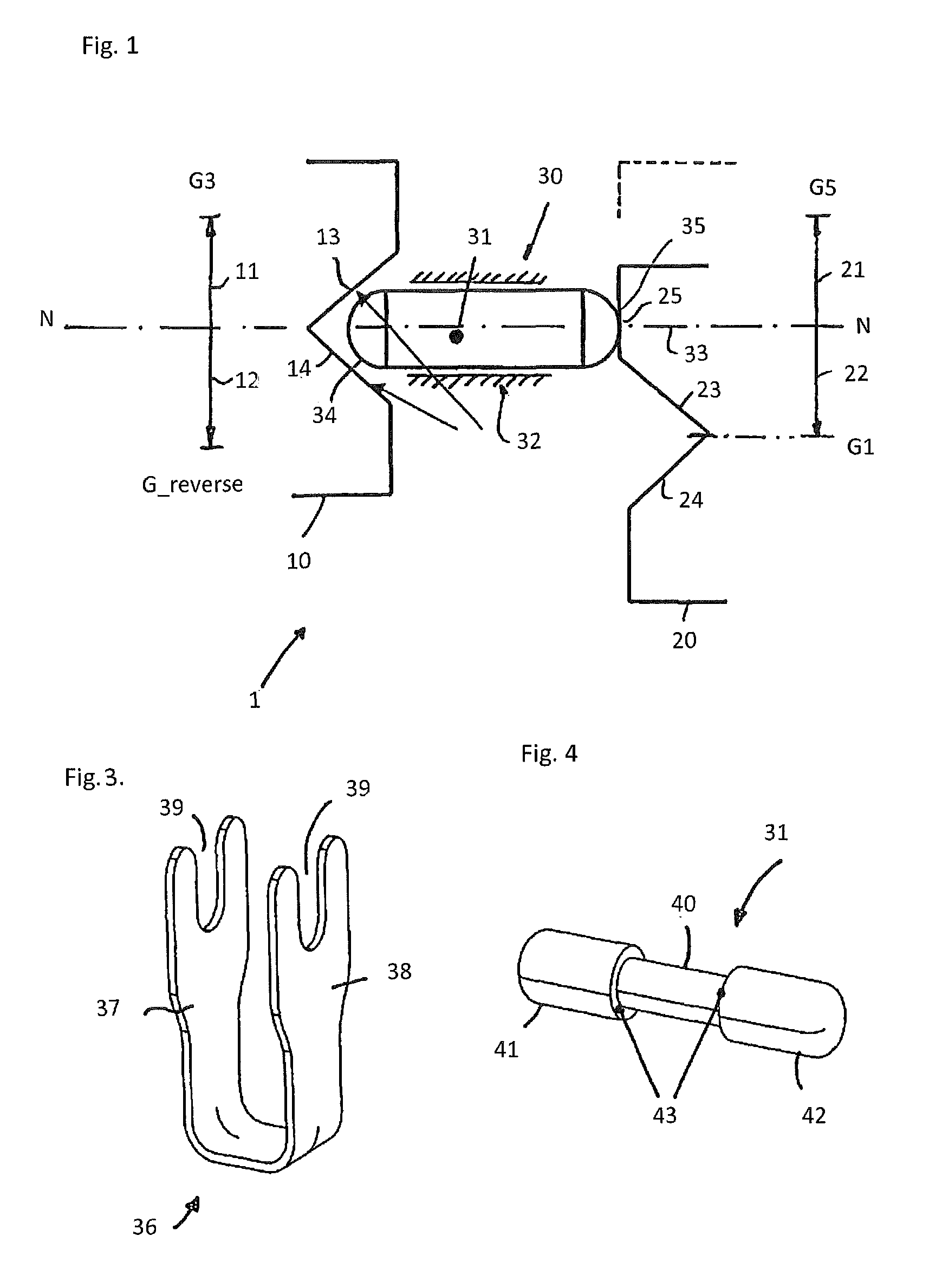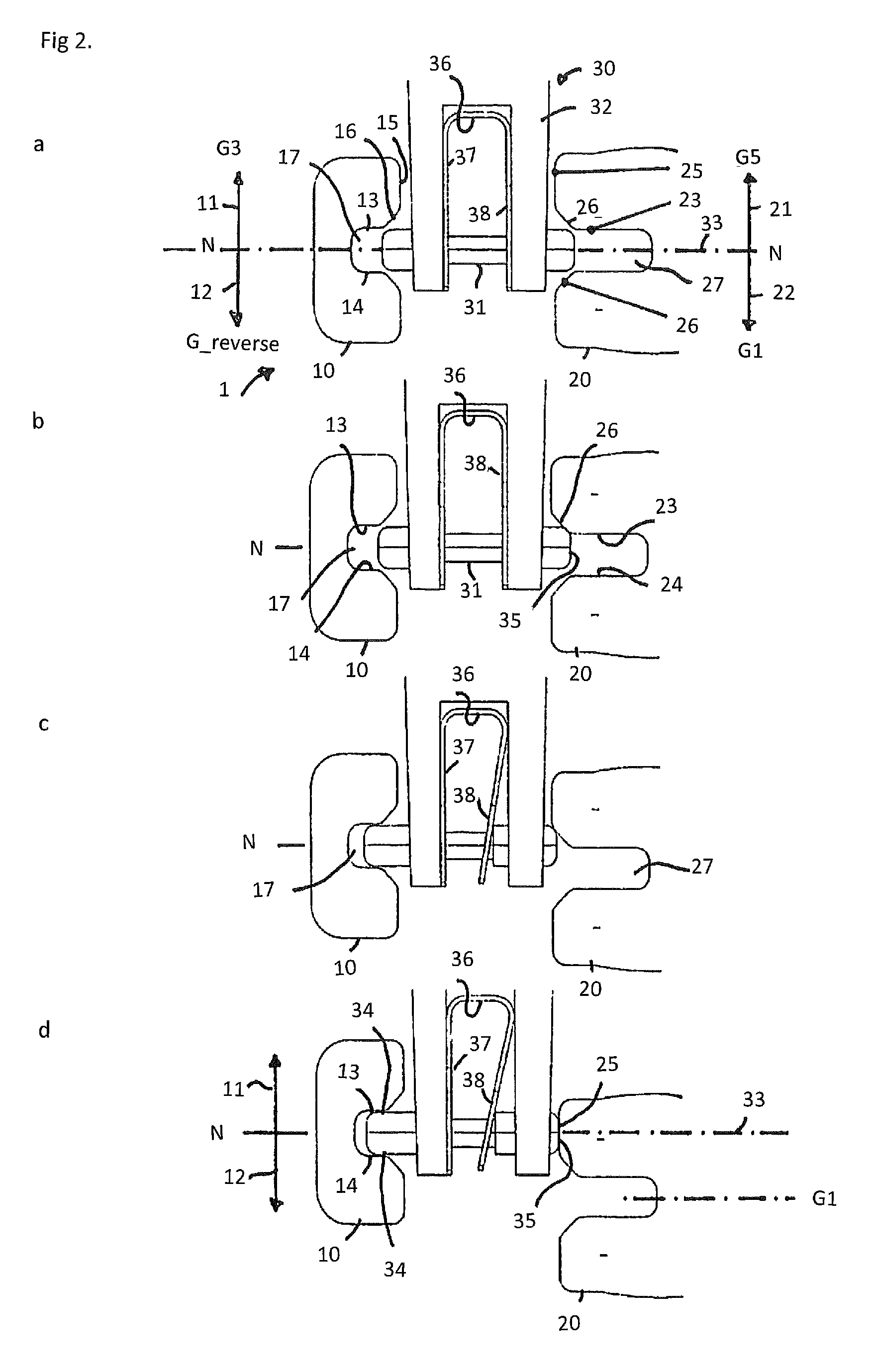Gear shifting mechanism with a locking mechanism for a gear shift transmission
a gear shift transmission and locking mechanism technology, applied in the direction of mechanical control devices, process and machine control, instruments, etc., to achieve the effect of simplifying the structure of the gear shifting mechanism and less expensive structur
- Summary
- Abstract
- Description
- Claims
- Application Information
AI Technical Summary
Benefits of technology
Problems solved by technology
Method used
Image
Examples
first embodiment
[0025]FIG. 2 schematically parts of the invention in the variety of positions;
[0026]FIG. 3 a leg spring according to the embodiment shown in FIG. 2;
[0027]FIG. 4 a locking element according to the embodiment shown in FIG. 2; and
second embodiment
[0028]FIG. 5 schematically parts of the invention.
DETAILED DESCRIPTION OF THE DRAWINGS
[0029]FIG. 1 shows schematically parts of a shifting mechanism according to the prior art. A first gear shift fork 10 that is only shown in part can be moved from the neutral position N in direction of arrows 11, 12.
[0030]Next to the first gear shift fork 10, a second gear shift fork 20 (only shown in part) is provided that can be moved in parallel to the first gear shift fork 10 in direction of the arrows 21, 22. In a gear shift transmission having multiple gears and having the gear shift mechanism installed, the gear shift forks 10, 20 can be allocated to two gears each. In particular, the gear shift transmission having multiple gears can be a partial transmission of a dual clutch transmission, accommodating the odd numbered forward gears G1, G3, G5 and one reverse gear G_reverse. The second gear shift fork 20 is shown in a gear engaged gear position where the forward gear G1 is engaged. The othe...
PUM
 Login to View More
Login to View More Abstract
Description
Claims
Application Information
 Login to View More
Login to View More - R&D
- Intellectual Property
- Life Sciences
- Materials
- Tech Scout
- Unparalleled Data Quality
- Higher Quality Content
- 60% Fewer Hallucinations
Browse by: Latest US Patents, China's latest patents, Technical Efficacy Thesaurus, Application Domain, Technology Topic, Popular Technical Reports.
© 2025 PatSnap. All rights reserved.Legal|Privacy policy|Modern Slavery Act Transparency Statement|Sitemap|About US| Contact US: help@patsnap.com



